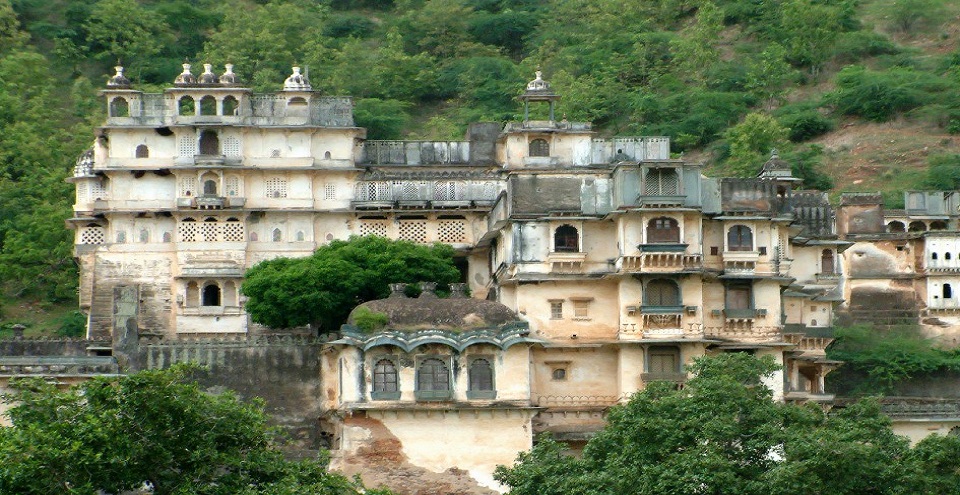
Juna Mahal: A Historic Jewel in Dungarpur
Nestled in the picturesque town of Dungarpur, Rajasthan, Juna Mahal stands as a remarkable testament to the grandeur and artistic brilliance of Rajput architecture. Known for its intricate design and historical significance, this palace offers a fascinating glimpse into the regal past of the Mewar dynasty. Here’s an exploration of Juna Mahal, highlighting its history, architectural features, and visitor experience.
A Historical Overview
Juna Mahal, also known as the “Old Palace,” was constructed in the 13th century by the rulers of the Dungarpur princely state. It served as the royal residence for the Maharaos of Dungarpur and was an important center of administration and culture. The palace’s design and construction reflect the architectural style prevalent during the era and showcase the opulence and sophistication of the Rajput rulers.
The palace has undergone various renovations over the centuries, but it still retains much of its historical charm and significance. It stands as a testament to the rich cultural heritage of Dungarpur and the Mewar dynasty.
Architectural Splendor
Design and Structure
Juna Mahal is renowned for its unique architectural style, which combines elements of Rajput, Mughal, and Persian design. The palace’s structure reflects a blend of artistic influences and showcases the craftsmanship of its builders.
Intricate Carvings: The palace features elaborate carvings and decorative elements, including ornate jharokhas (balconies), arches, and latticework. These intricate details highlight the artistic skills of the craftsmen who worked on the palace.
Elegant Facades: The palace’s facades are adorned with detailed frescoes and murals that depict scenes from royal life, mythology, and historical events. These artworks add to the palace’s grandeur and provide insights into the cultural and artistic achievements of the time.
Courtyards and Halls: Juna Mahal includes several courtyards and halls, each with its own unique design and purpose. The palace’s courtyards are adorned with lush gardens and water features, creating a serene and picturesque environment.
Notable Features
The Diwan-e-Aam: The Diwan-e-Aam, or Hall of Public Audience, is a prominent feature of the palace. It was used for public gatherings and official meetings and is known for its impressive architectural details and ornate decorations.
The Zenana Mahal: The Zenana Mahal, or Queen’s Quarters, is another notable section of the palace. It features beautifully decorated rooms and private spaces for the royal women, showcasing the palace’s luxurious and intimate settings.
Frescoes and Murals: The palace’s walls are adorned with exquisite frescoes and murals that depict various aspects of royal life, mythology, and historical events. These artworks provide valuable insights into the cultural and artistic heritage of the region.
Cultural and Historical Significance
Juna Mahal holds significant cultural and historical value as part of Dungarpur’s royal heritage. It represents the opulence and sophistication of the Rajput rulers and offers valuable insights into their architectural and artistic achievements.
Key Attractions
Architectural Detailing: The palace’s intricate carvings, frescoes, and decorative elements highlight the artistic skills of the builders and the aesthetic preferences of the royal family.
Historical Artifacts: Juna Mahal houses various historical artifacts and architectural elements that offer a glimpse into the lifestyle and culture of the Dungarpur royal family.
Cultural Heritage: The palace’s design and decorations reflect the cultural and artistic heritage of the Rajput era, providing valuable insights into the region’s history and traditions.
Tips for Visitors
Timing: Juna Mahal is generally open to visitors throughout the week. It’s advisable to check specific visiting hours and any special events before planning your visit.
Dress Code: Wear comfortable and respectful attire, considering the cultural and historical significance of the site. Comfortable footwear is recommended due to the walking involved.
Guided Tours: Hiring a local guide can enhance your visit by providing detailed information about the palace’s history, architecture, and significance. Guides can offer valuable insights and anecdotes that bring the palace’s history to life.
Photography: Photography is usually allowed, but be mindful of any restrictions, especially inside specific areas of the palace.
Juna Mahal in Dungarpur is a historic jewel that offers a captivating glimpse into Rajasthan’s royal heritage. Its intricate architecture, detailed frescoes, and serene courtyards make it a unique and memorable destination. As you explore its grand halls, admire its artistic details, and immerse yourself in its regal history, you’ll gain a deeper appreciation for the opulence and elegance of the Rajput era. A visit to Juna Mahal promises an enriching experience, revealing the splendor and charm of one of Rajasthan’s lesser-known but equally fascinating landmarks.
